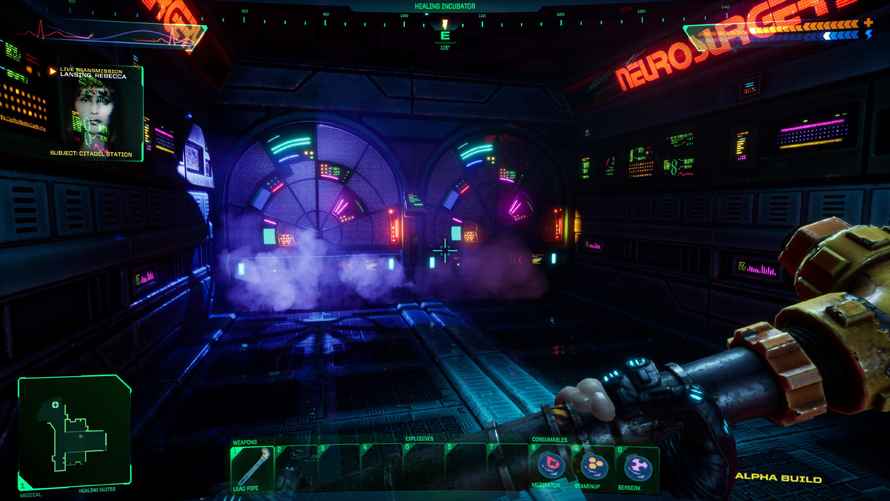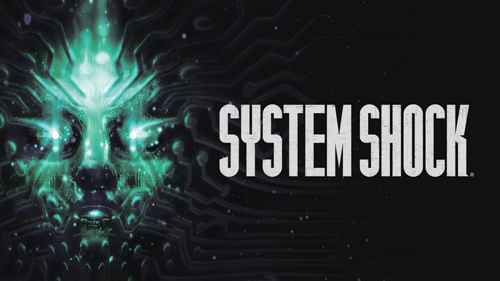System Shock Review
If there’s a first-person shooter with more gaming cred than 1994’s System Shock, I’ve never heard of it. The original remains on a pedestal for being one of the most innovative, influential shooters of all time. Non-linear progression, new forms of movement and cover, interactive elements, and a dystopian theme of out-of-control technology made System Shock stand out. Although it began as a dramatic reimagining or even a reboot of the series, Nightdive instead has released something akin to a remaster, with updated, Unreal engine graphics and some noticeable changes to gameplay and visuals.
SHODAN Showdown
Thirty years is forever in video game history, and there are no doubt many who have no idea what System Shock is or was. In a nutshell, you play as a nameless hacker who is sent to Citadel space station, owned by TriOptimum corporation. Originally meant to hack into SHODAN, Citadel’s AI, your task becomes to defeat SHODAN. The AI has turned everyone on board into mutants and cyborgs. SHODAN wants to seed Earth with a deadly virus. The stakes are high, indeed.
The original System Shock innovated in several ways. The free-look camera, ability to interact with objects, environmental puzzles, and non-linear gameplay were mechanics used for decades to come. A few years later, Duke Nukem 3D, Redneck Rampage, Blood, and countless others used similar ideas. System Shock had a much more complex story. Early on it was hinting at the impact of rogue technology.

While the use of NPCs in action games was a few years away, System Shock had two excellent vocal performances. The player is guided by the voice of ally Rebecca Lansing, while the voice of SHODAN taunts and threatens. Much of the story comes from the environment, notes, and electronic logs. This type of storytelling became known as emergent gameplay, where the player has agency over piecing together the narrative.
Then and Now
Anyone coming to 2023’s System Shock expecting a remake along the lines of the recent Dead Space or Resident Evil 4 will be a little disappointed. You might think of this new version as optimized and modernized, with much better tech than the 1994 original. Graphically, it’s light years better than what was possible thirty years ago. It’s brighter, sharper, and has a modern lighting engine. While a lot of the textures are still pretty plain, and even pixelated up close, the visuals look good. Like so many remakes with this approach, the new version looks like you imagined it in 1994. The game now does the heavy lifting instead of your imagination.
Figure models for the various mutated humans and robots are obviously much improved, but still pretty unconvincing by recent standards. There are a ton of graphics options to play with. While we’re talking about settings, there are also lots of ways to play with difficulty. You can adjust puzzle difficulty apart from combat challenge, for example. The game’s UI has been re-imaged, too, bringing it in line with modern shooters.

One of the original game’s most striking elements was when the player descended into SHODAN and an alternate reality, wireframe world. This new version changes it into a fully 3D space with wireframe elements, giving it a Descent-type feel. The original’s confusing maze-like areas have been simplified, making them less frustrating. The variety of environments in Citadel Station remains impressive and interesting.
Fun with Guns
While combat in 1994’s System Shock pales against modern shooters, it was pretty forward-looking. There are blunt weapons like pipes, pistols with various types of ammo, and area-of-effect weapons like grenades. Different weapons and ammo types are effective against specific enemies. Ammo capacity is also limited, so each tense shot must count.
The remaster preserves the important elements of combat, but adds things like dismemberment and more realistic effects than were possible back in the day. Still, I think this is the area that feels the least improved. Melee combat lacks a feeling of physical connection and weight. Guns a visually better, but their sound design comes across as anemic. Enemies ragdoll in unconvincing ways.
Other aspects of the production fare better than sound design. Terri Brosius reprises her role as the voice of SHODAN, and remains perfect in the role. While the script has been revised, it’s still excellent. The musical score, which adapts in real-time to the player’s actions, is electronic textures that vary from spacey ambiance to more energized tracks.

The System Shock We Need
System Shock in 1994 was an innovative masterpiece. Anyone coming to the game via this remaster in 2023 might wonder what all the fuss was about. While its themes of unrestrained AI and corporate espionage still resonate, this version doesn’t go quite far enough to make System Shock feel modern. We’ve come to take for granted just about everything the original invented. While we wait for a genuine reboot, System Shock is worth playing as a reminder of how important great ideas were, and still are, to the hobby we love.
***PC code provided by the publisher for review***
The Good
- Excellent writing and voice work
- Innovative design
- Effective lighting
- Lots of modern options
The Bad
- Combat lacks punch
- Textures are simple
- Unimpressive audio design

